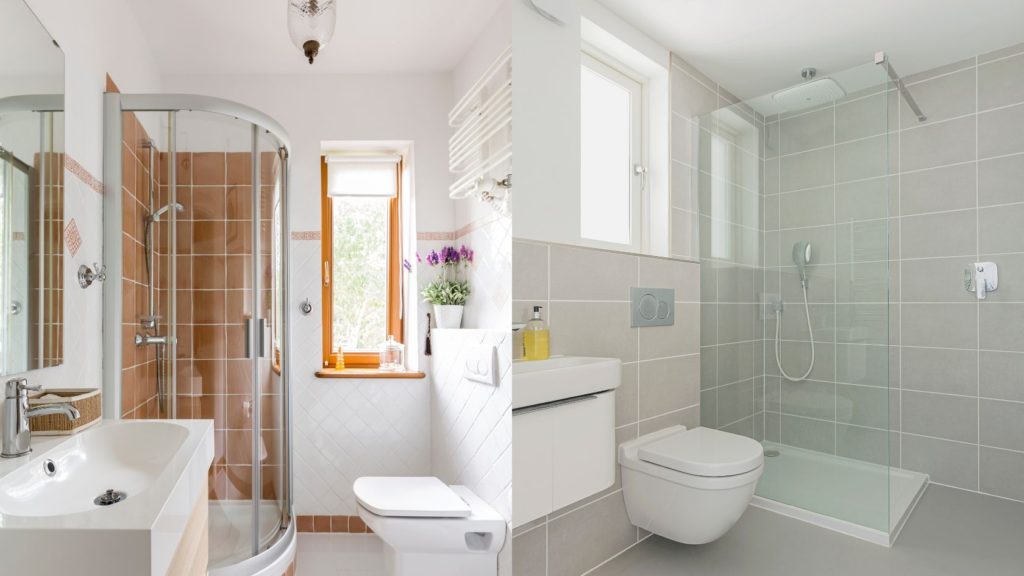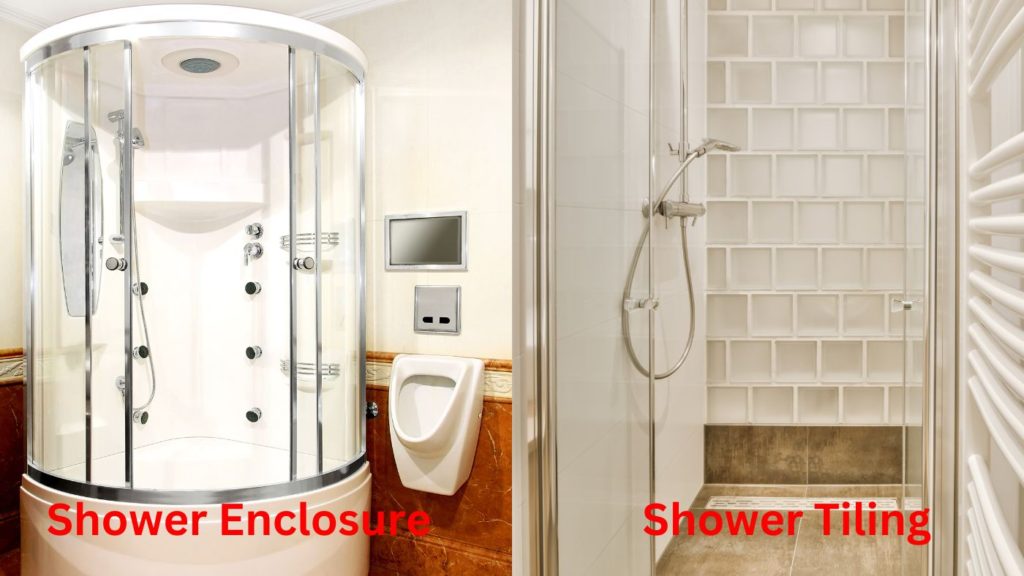When it comes to bathroom remodeling, homeowners often face the dilemma of choosing between shower enclosures and traditional tiling. The question frequently arises,
“Is it cheaper to tile a shower or buy a surround?
” Each option has its advantages and considerations, including cost.
This article will compare shower enclosures and tiling based on cost, installation, maintenance, and overall value.
After reviewing this, you should know which option will work best.
Shower Surround vs. Tile: The Cost Factor
When it comes to cost, shower surrounds often come out ahead. They are generally less laborious to install than tiling, which can translate into lower installation costs. It is essential to observe; however, that cost comparisons are not always black and white.
While surrounds made of standard materials tend to be more affordable, high-end materials like granite can be pricier than tiling with certain grades of tile. Therefore, the cost aspect may vary depending on the materials you choose for your shower enclosure or tile.
Shower Insert vs. Tile: Installation Considerations

The ease of installation is another crucial aspect when deciding between shower enclosures and tiling. Shower surrounds are designed to be installed quickly and efficiently, often requiring minimal expertise. On the other hand, tiling a shower can be a more intricate process that demands a certain level of skill and experience.
If you’re looking for a hassle-free and time-efficient installation, a shower insert may be the more suitable option. However, if you enjoy the challenge of a DIY project or have the budget to hire professional tilers, tiling can offer your shower a unique and personalized touch.
Maintenance and Durability: Shower Surrounds vs. Tile
Regarding long-term maintenance and durability, shower enclosures and tiles have advantages. Shower surrounds, especially those made of acrylic or fiberglass, are known for their easy maintenance. They are stain-, mildew-, and grime-resistant, making them a popular option for busy households. In contrast, tiled showers need routine maintenance to prevent grout discoloration and mildew growth.
While tile is generally durable and can last many years, it’s important to ensure proper sealing and maintenance to avoid potential issues. Ultimately, choosing between a shower surround and a tile will depend on your preferences and willingness to invest time in maintenance.
Overall Value: Which Option is Worth It?
Determining the overall value of shower enclosures and tiling involves considering various factors, such as cost, installation ease, and maintenance requirements. A shower surround may be the best option if you’re searching for a cost-effective option with a simple installation process. It offers a cost-effective solution without compromising on style and functionality.
However, you prioritize personalization and will invest in professional installation or take on a DIY tiling project. In that case, tile can add a touch of elegance and uniqueness to your bathroom.
Conclusion
In comparing shower enclosures and tiling, the cost-effectiveness depends on individual preferences, budget constraints, and desired aesthetic appeal. Shower surrounds generally offer a more affordable and less labor-intensive option, while tiling provides an opportunity for personalization and adds value to your bathroom. Consider your priorities, budget, and long-term maintenance requirements when deciding.
Whether you choose a shower surround or tile, both options can transform your bathroom into a beautiful and functional space that complements your requirements and aesthetic preferences.
FAQs
Is it cheaper to tile a shower or buy a surround?
The price difference between tiling a shower and buying a surround can depend on the materials used and how hard the work is. Shower surrounds are more cost-effective due to their relatively lower installation labor costs. However, it’s important to note that high-end materials for surrounds, like granite, can be more expensive than tiling with certain grades of tile.
Consider your budget, desired materials, and overall bathroom remodeling objectives to determine the most cost-effective option for your endeavor.
What is the difference between a shower surround and a tile?
A shower surround is a prefabricated unit made of various materials, such as acrylic or fiberglass, designed to enclose the shower area. It typically comes in panels that can be easily installed and offers a seamless look.
On the other hand, tiling involves covering the shower walls with individual tiles, which can be made of ceramic, porcelain, natural stone, or other materials. Tiling allows for more customization and design flexibility but requires more intricate installation.
Is shower surrounds easy to install?
Yes, shower surrounds are generally easier to install compared to tiling. They are designed to simplify the installation process and can often be installed by homeowners with basic DIY skills. Shower surrounds come in pre-measured panels that can easily fit into the shower space.
Conversely, tiling requires more expertise and precision, as each tile must be installed individually, grouted, and sealed. If you’re looking for a hassle-free installation, a shower surround may be the more convenient option.
Are tiled showers more durable than shower surrounds?
Both tiled showers and shower surrounds can be durable, but they have different maintenance requirements. Shower surrounds, especially those made of acrylic or fiberglass, are known for their durability and resistance to stains, mildew, and grime. They are relatively low-maintenance and require only regular cleaning to keep them in good condition.
Tiled showers, on the other hand, require proper sealing and periodic maintenance to prevent grout discoloration and mold growth. With the right care, both options can last for many years.
Can I customize the design of a shower surround?
Shower surrounds offer limited customization compared to tiled showers. While you may have some options in color and pattern, the design choices for shower surrounds are more restricted than the wide variety of available tile options. If you prioritize customization and want a unique design for your shower, tiling may be the better choice.
With tiles, you can create intricate patterns, mix and match different colors, and even incorporate decorative accents, allowing for a more personalized and visually appealing shower design.
Can I install a shower surround myself, or do I need professional help?
One of the advantages of shower surrounds is their relatively easy installation, which homeowners can often do with basic DIY skills. Most shower surrounds have clear instructions and can be installed using common tools.
However, you should consult a knowledgeable professional with any concerns or queries about the installation procedure. They can ensure proper installation, guide material selection, and help address any specific challenges related to your bathroom layout.
Which option provides better long-term value: shower surrounds or tile?
Determining the long-term value of shower surrounds versus tile depends on your specific needs, preferences, and budget. Shower surrounds generally offer a more affordable and less labor-intensive option, making them cost-effective. They also tend to be more low-maintenance and resistant to stains and grime.
On the other hand, tiled showers offer greater design flexibility, personalization, and a potential increase in overall home value. Suppose you’re willing to invest in professional installation or take on a DIY tiling project. In that case, tile can provide a more luxurious and customized look, which may be advantageous in the long run.


